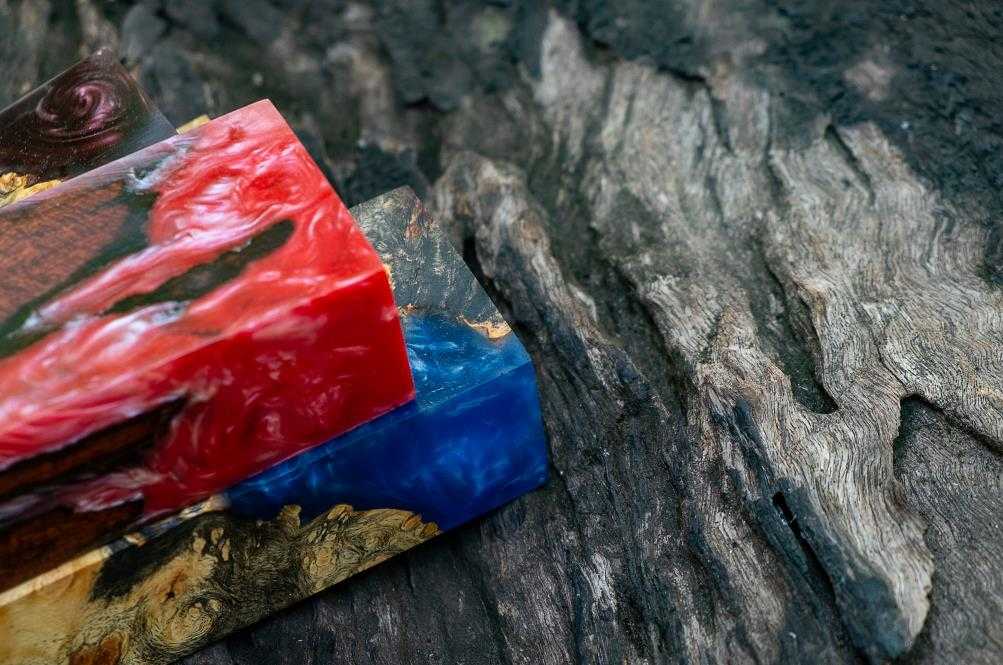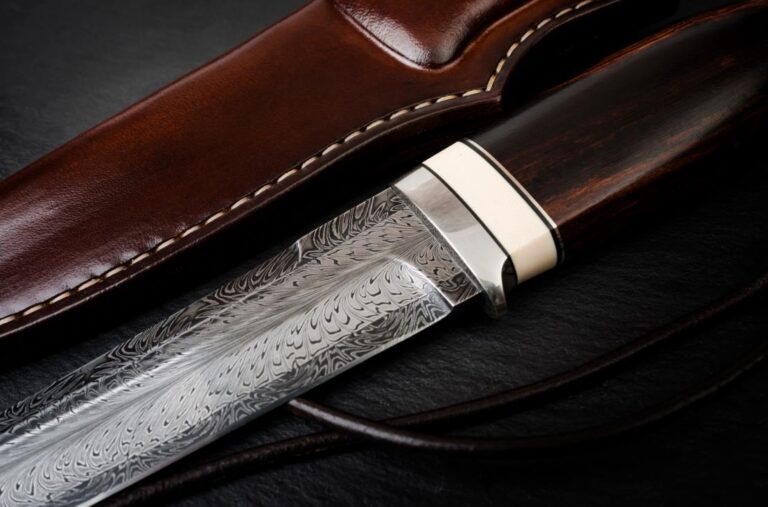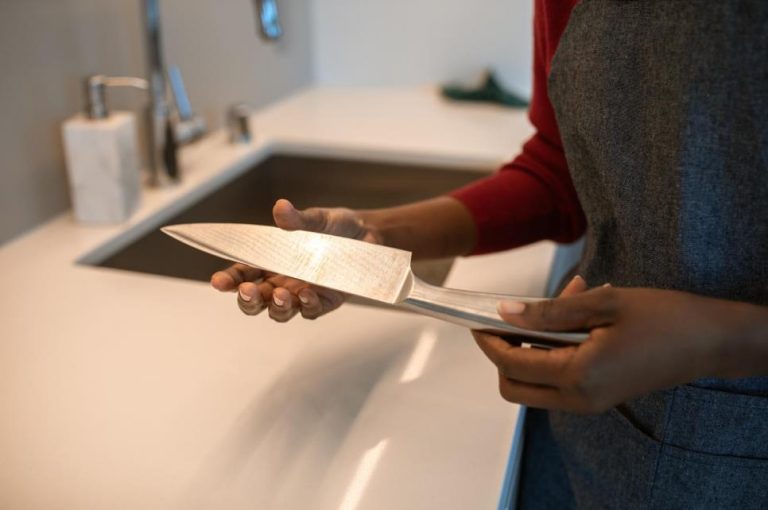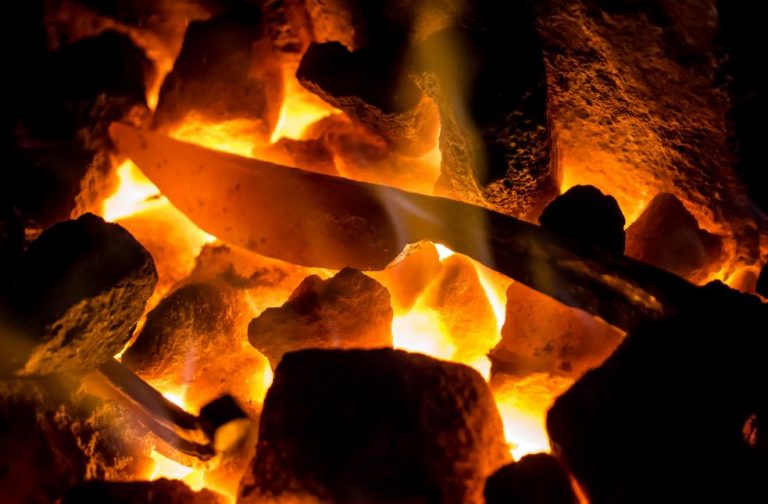Knife manufacturers commonly use composite materials to furnish their blades. They are affordable yet provide blades with fantastic traits. Some composite materials are more prevalent in specific knives than others among the various options. Pakkawood is an excellent example of this.
Pakkawood is composite wood widely used in different kitchen products, including kitchen knife handles. It has a variety of textures and colors. As it’s composite wood, manufacturers can mold pakkawood into different shapes and colors easily.
These make pakkawood one of the most versatile materials for making knife handles. This article will cover everything you need to know about pakkawood, one of the most commonly used materials for making knife handles and other kitchen products.
Is pakkawood natural or synthetic?
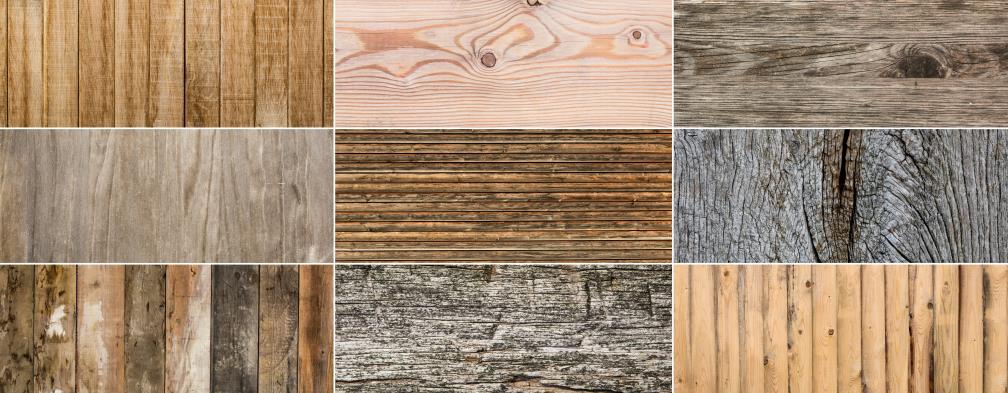
The answer to whether pakkawood is natural or synthetic is a bit tricky. Since this is composite wood, manufacturers can utilize a variety of materials to bring it together.
Pakkawood is made from wood veneer pieces with any wood waste, like sawmill dust and scraps. Manufacturers bring these wood wastes that otherwise would be thrown out using synthetic resin. Therefore, pakkawood is more so an engineered composite wood, not a naturally occurring wood like walnut or ebony.
Nonetheless, pakkawood contains various types of natural wood scraps compressed together with synthetic resin to bind it under high heat and pressure. Because pakkawood is basically made from scraps that otherwise would be thrown out, it’s more affordable than natural wood.
Additionally, pakkawood is sustainable like natural wood and biodegradable, making it environmentally friendly.
Pakkawood features
- Pakkawood is dense like hardwood. In fact, it’s denser than some hardwoods.
- Pakkawood can be in a variety of colors and textures, making it an aesthetically versatile material.
- As a knife handle material, pakkawood provides a solid grip.
- Pakkawood resists bacterial growth and molding much better than natural wood.
- Pakkawood isn’t susceptible to warping or splitting. It doesn’t get damaged under prolonged wet conditions.
Pakkawood uses
The characteristics of pakkawood make it an excellent choice for kitchen products, mainly knife handles. Here is where you’ll typically find pakkawood.
Knife handles
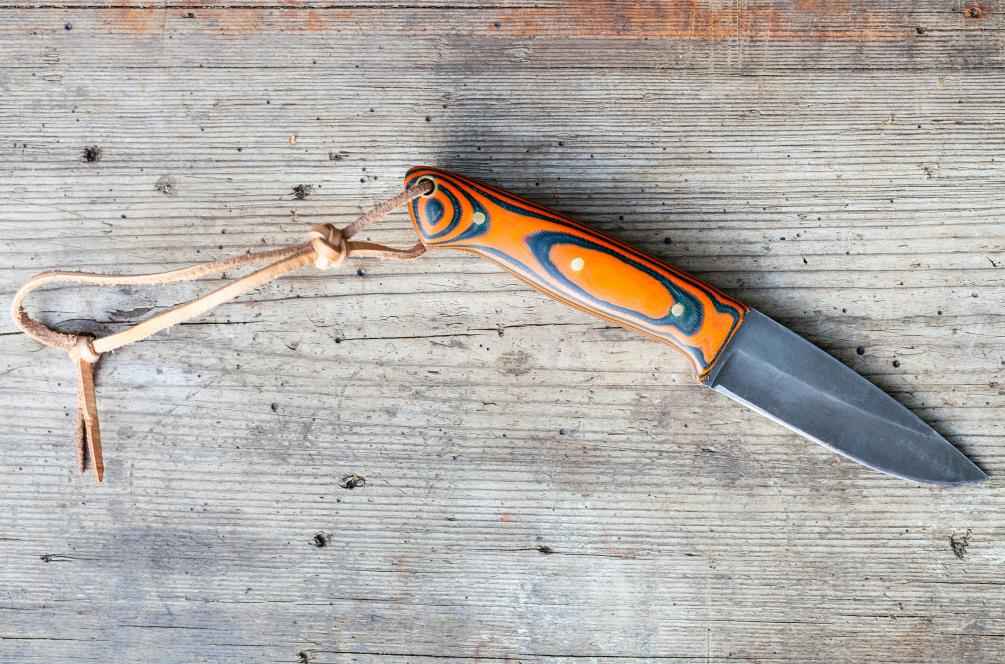
The knife handle uses of pakkawood is often seen in kitchen knives, not pocket knives.
Because pakkawood is dense like natural hardwood, it’s resilient to moisture. Although care is vital, pakkawood isn’t known for warping or cracking. It can get dry, but all it takes is some food-grade mineral oil to bring back its shine.
Durability and resisting moisture aren’t the only reasons why pakkawood is prevalent in knife handles. Being composite, it’s an affordable material. Pakkawood can help reduce production costs while equipping blades with a sturdy, fair-quality handle.
Even though most pakkawood knife handles are on kitchen knife blades, a fair number of pocket knife handles are made with it. The pakkawood handles in pocket knives are mainly found in blades that don’t get as much use, like collector’s items. Carbon fiber, aluminum, titanium, and similar materials are usually preferred for pocket knives.
The demanding nature of the outdoors makes wood handles, in general, for pocket knives more suitable for ones that aren’t used as often. Even though pakkawood is technically not wood, many of the things that apply to wooden handles also apply to it. Pakkawood is essentially wood fibers brought together with resin by pressing and heating.
Buy Pakkawood Handle Knives and Start Scaling up with Us Today
Contact us and connect with a sales rep to get a free quote.
Kitchen utensils
Pakkawood’s ability to keep moisture at bay isn’t only good for knife handles. There is an abundance of pakkawood kitchen products, from spoons to other utensils to bowls. Furthermore, pakkawood resists heat well and doesn’t crack easily as natural wood does.
While knowing the “wooden” utensils will resist moisture and tolerate heat are vital, pakkawood is also favored for its texture. It has a smooth surface that’s comfortable to hold and provides a firm grip. From spoons to spatulas, pakkawood is the best alternative to natural wood kitchen utensils. It’s even better than many wooden utensils as it’s unlikely to crack, which is the most evident concern.
Comparison to other knife handle materials

Without a doubt, natural wood is the most popular choice for making knife handles. Despite not being natural wood, pakkawood carries many of the traits found in them. For this reason, it doesn’t make as much sense to compare it with natural wood.
Still, the difference anybody would easily find is the maintenance needs. Wood is more demanding from the user than pakkawood. It requires more frequent oiling and upkeep. Read this article comparing different knife handle materials for more.
Here is a quick rundown of comparing pakkawood with other knife handle materials.
Plastic vs. pakkawood
When comparing pakkawood knife handles with plastic, it stands out with its firm, comfortable grip, and aesthetics. Plastic is much cheaper than pakkawood, but it doesn’t require significant amounts to choose pakkawood over it.
The best place where plastic might be a better choice is for cutting down costs for mass-producing knives. Plastic knife handles are also more sanitary and need little to no upkeep. Being more sanitary and requiring little maintenance, plastic knife handles can be more suitable in commercial kitchens as they have higher food safety standards.
Metal vs. pakkawood
Aluminum and steel are two dominant metal handle materials for knives. Metal handles are more prominent in outdoor knives as they are sturdier. Compared to pakkawood, these handles are more durable. However, they are also heavier, making them unfavorable for kitchen knives.
Additionally, metal handles aren’t sought after in kitchen knives. Some brands have handles made from the same piece of steel as the blade that has a unique look. Undoubtedly having a unique-looking knife would be attractive. Needless to say, these knives also come with a much higher price tag than most people are willing to pay.
Other composite materials vs. pakkawood
There is a reason why pakkawood has a name as any other natural wood. It’s a composite material in the end, but it’s typical to think of pakkawood as a well-engineered wood. It’s sturdy, pleasing to the eye with plenty of color options from bright to dark shades, and sanitary.
These qualities of pakkawood leave many other composite materials behind. There are certain types of composite materials that are adjusted to meet the needs of specific users. For example, increasing the amount of binders and fillers can make other composite materials resist moisture better. This trait can benefit fishers and divers and make these composite materials more appealing.
Regardless, pakkawood will satisfy most users as long as they are looking for something versatile without a particular feature in their minds.
Conclusion
Overall, pakkawood is as durable, comes in plenty of color and texture options, easy to work with for knifemakers, and affordable.
These are enough to make it a very pleasing knife handle material for both users and sellers. Pakkawood knife handles can benefit anyone planning to launch their knife brand from a user satisfaction and cost perspective. It will reduce the cost of putting the knives together, increasing the profit margin.
The downside to pakkawood is it’s not a natural material. Kitchen products have many buyers wanting everything natural and organic. Pakkawood might not be enough to convince dedicated buyers, despite being largely made up of natural materials.
How to care for pakkawood
Sellers should warn their customers about the care requirements of their products so that they don’t get disappointed. At LeeKnives, we provide our partners with everything they need, from private labeling to vital descriptions on the packaging.
Here are the care requirements for pakkawood handles to shape an idea of what they would demand from your buyers.
Buy Wholesale Knives with Private Labelling Today
Contact us and connect with a sales rep to get a free quote.
Cleaning

All kitchen knives and others alike should be hand washed no matter the handle material. The dishwashers can harm both the handle and the blade.
Despite being good at resisting high heat, pakkawood handles can dry out quickly after cleaning in the dishwasher. This can result in pakkawood separating from the blade’s tang. Instructing the users to handwash the knife entirely using a sponge and regular dish soap with warm water is vital.
Oiling
Composite doesn’t need oiling as often as natural wood, but it should be a part of the care routine. As mentioned, pakkawood can dry out and cause further problems. Oiling the handle with a generous amount of mineral oil every now and then will create a barrier that protects the handle from such issues.
Following these two simple care requirements – handwashing and oiling – pakkawood knife handles will last as long as the blade.
Is pakkawood made from hardwood?
Usually, there isn’t a set standard for the type of wood for making composite materials. This doesn’t apply to pakkawood. It is typically made from hardwood veneers, scraps, and sawdust. In addition to this, various hardwoods like walnut, maple, oak, and so on can be mixed to make pakkawood.
Is pakkawood food safe?
Pakkawood is just as food safe as natural wood. After all, it’s a mix of natural hardwood and synthetic resin that’s also completely food safe.
Final words
Despite not being a natural material for making knife handles, pakkawood can benefit users with its durability and manufacturers with low cost. Although pakkawood is mainly fitted in kitchen knives, it’s still a pleasing choice for any other blade, from pocket knives to swords and katanas.
At LeeKnives, we utilize plenty of different knife handle materials depending on the needs of our partners. If pakkawood sounds like the perfect knife handle material for the blades you have in mind, contact us to request a quote. With 30 years of experience under our belts with global shipping and storage, we can take care of all your knife manufacturing needs.
